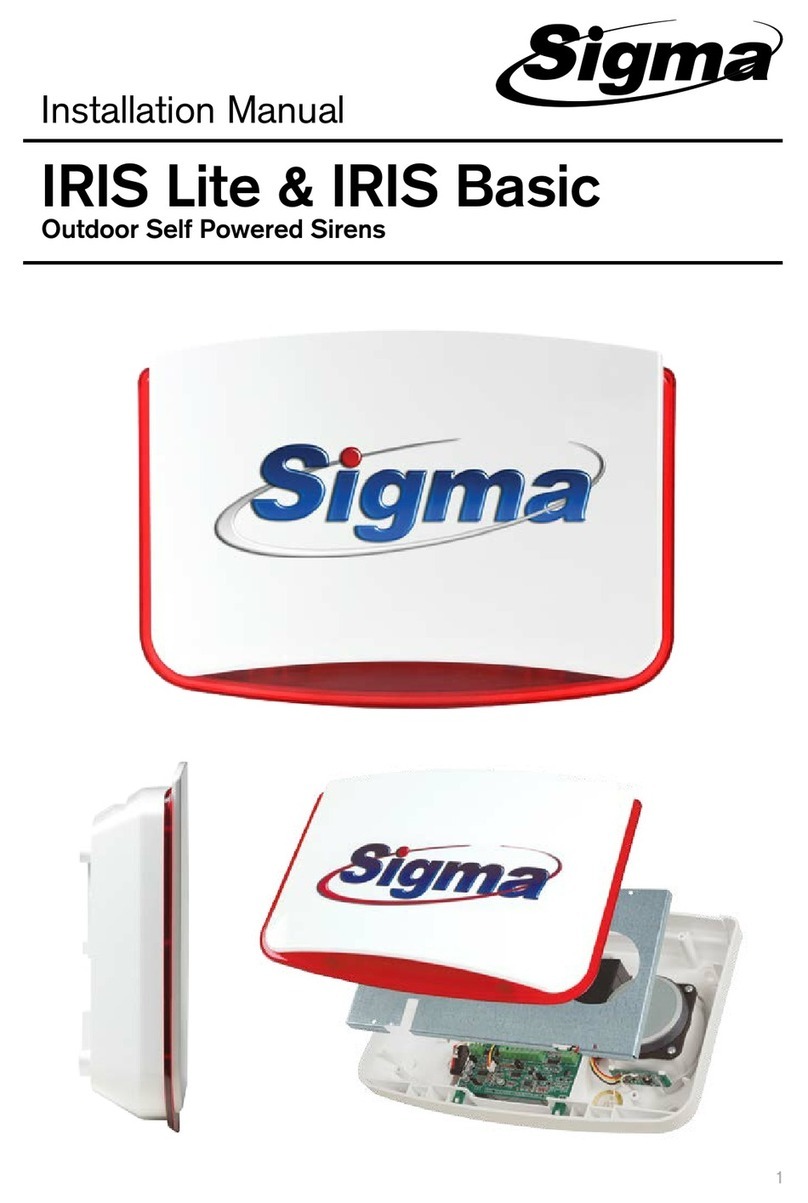
WARRANTY
Thank you for selecting our products which have been designed and manufactured to offer you security and safety for
many years. They have been thoroughly tested before reaching your hands, and has passed all nessecary performance
tests. All our products are covered by a 24 (twenty four) months waranty of good operation,from the date of pur-
chase and covers the products that are accompanied by invoice or receipt of purchase.
This warranty covers the free of charge repair of the device (parts and labour) in case the malfunction is due to failure of
device itself and not if the failure is cause to any wrong installation, improper use or external factors such as lightnings,
floods, excess power voltage etc. Waranty ceases to excist if the device has been installed or repaired by an unauthorised
person. Also, this warranty does not cover the losses, failures or injuries that might happen to the secured area, in
case of miss operation of the device.
Finally, our company is not responsible for the correct installation and use of the security system, for which solely re-
sponsible is the installer.
ATTENTION!
You must regularly test the siren operation. We advice you to perform operation tests at least once
per month. Thus, you will make sure that the siren will sound in case of alarm.
IRIS / IRIS FSD - 8
• If, however, cut or shorted wires to connect the siren to the alarm control panel, the siren gives
alarm, maximum duration 15 minutes.
• In normal operation the siren follows the alarm duration of the alarm control panel. In case,
however,a cut or shorted wire to connect the siren to the alarm control panel, the siren gives
alarm, maximum durationof 15 minutes.
• “TC” input (Tamper Control input) is used to deactivate the siren’s Tamper, when you open the
cover of the siren for service, without given an alarm. Connect “TC” input to a “PGM” output of
the alarm control panel, which provides 12 V at standby mode and goes to 0 when the panel
arm (at Sigma alarm control panels connected to PGM1, type 27). The presence of 12V on this
input disables the Tamper of the siren for 10 minutes. For security reasons the siren’s Tamper
will be active 10 minutes after the application of voltage on “TC” input.
To openthe cover of the siren, follow the procedures below:
Disarm the panel (in the case of Sigma alarm control panels) or senda12V to the TC input.
You have ten minutes to open the cover without activating the siren, because these time the
Tamper of the siren is inactive. After opening, the time may to be keep open the siren is
unlimited.
When you completethe Service on the siren, close the cover. One minute from the time you will
close the cover, the siren returns to normal operation and the Tamper is active again.
• The “SIGN” input is used to signal audibly or visually the arming and disarming of the alarm
control panel, when remote control is used. It is activated for as long as there are +12 V at this
input. Connect this input to a PGM output of the alarm control panel, programmed accordingly.
In Sigma’s alarm control panels connected to PGM type 29.
• Connectsiren’s “AL” output to a 24 hours zone of the alarm control panel, as shown in the
above schematic. If you wish, except an alarm that will give siren in every attempt violation of
this, to give an alarm and the control panel.
For more safety, place the EOL resistor of this zone inside the box of the siren. The “AL” output
is at 0 at standby mode and is and turns to Open Collector, in case of violation (opening the
front cover or detaching of the siren from the wall).
• When you finish cable connections, connect the battery to thesiren. The siren can remain in this
condition until you finish theinstallation. The siren will start to operate normally only when
supplied with power from the alarm control panel.
• Insert the innercover and fasten it with four corresponding screws.
• Close siren’s external cover and fasten it with two corresponding screws.



























